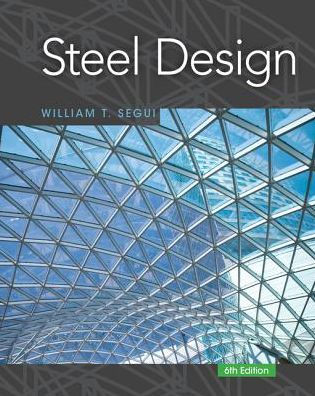Steel Design
Learn the fundamentals of structural steel design with STEEL DESIGN’s unique emphasis on the design of members and their connections. With this best-selling book, you can learn LRFD (Load and Resistance Factor Design) or ASD (Allowable Stress Design), depending on how your course is taught. You will master the application of fundamental principles for design procedures, as well as for practical design. You will also study the theory behind these procedures, which further strengthens your engineering knowledge. While this market-leading book is ideal for your junior-and senior-level steel design class, later chapters are also useful for graduate courses. The book functions as a valuable ongoing reference tool for success in your career as a practicing engineer.
1126356358
Steel Design
Learn the fundamentals of structural steel design with STEEL DESIGN’s unique emphasis on the design of members and their connections. With this best-selling book, you can learn LRFD (Load and Resistance Factor Design) or ASD (Allowable Stress Design), depending on how your course is taught. You will master the application of fundamental principles for design procedures, as well as for practical design. You will also study the theory behind these procedures, which further strengthens your engineering knowledge. While this market-leading book is ideal for your junior-and senior-level steel design class, later chapters are also useful for graduate courses. The book functions as a valuable ongoing reference tool for success in your career as a practicing engineer.
259.95
In Stock
5
1

Steel Design
800
Steel Design
800Hardcover(New Edition)
$259.95
259.95
In Stock

Product Details
| ISBN-13: | 9781337094740 |
|---|---|
| Publisher: | CL Engineering |
| Publication date: | 04/11/2017 |
| Series: | Activate Learning with these NEW titles from Engineering! |
| Edition description: | New Edition |
| Pages: | 800 |
| Product dimensions: | 7.50(w) x 9.30(h) x 1.30(d) |
About the Author
From the B&N Reads Blog
